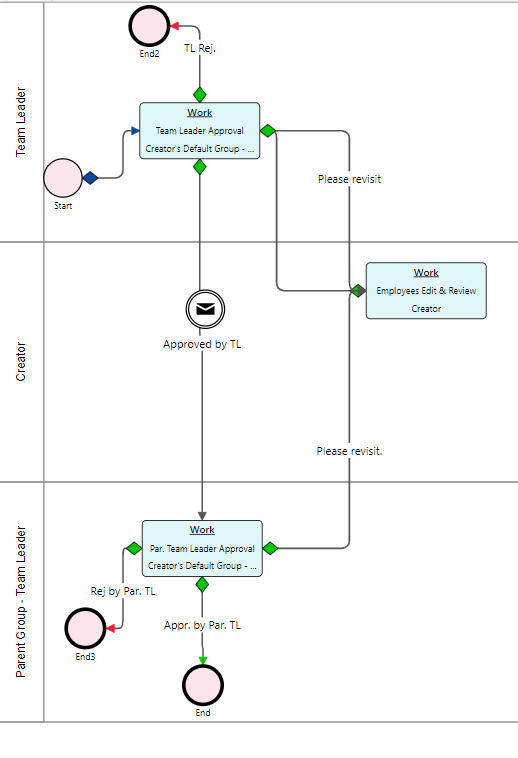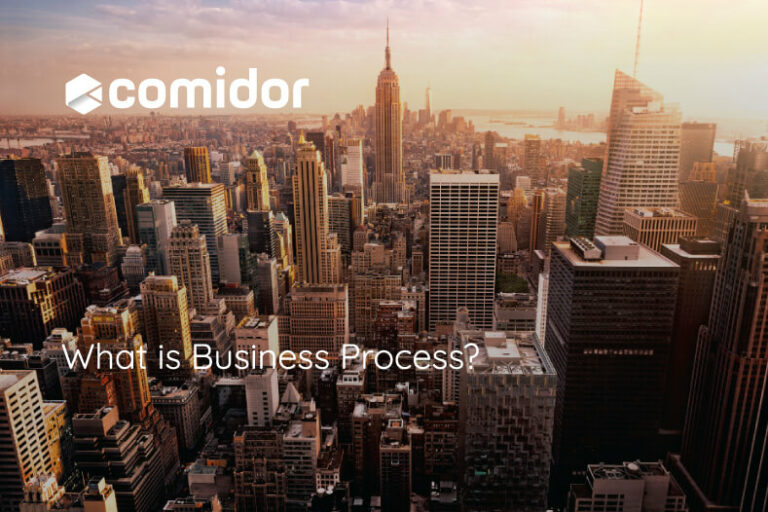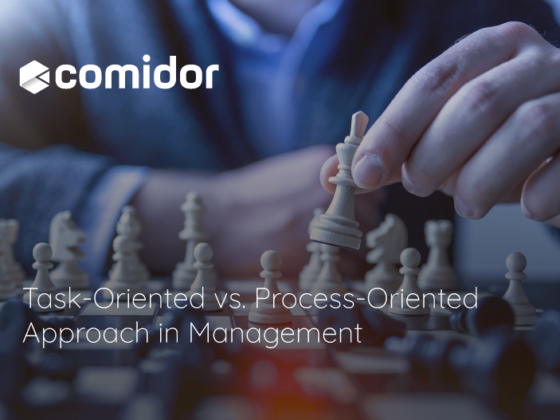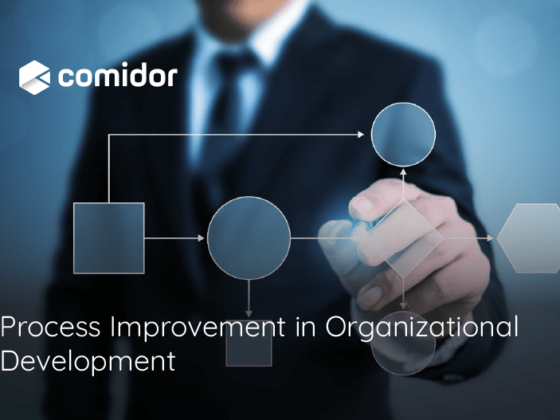What is Business Process? Business Process Definition
Gartner defines a business process “as an event-driven, end-to-end processing path that starts with a customer request and ends with a result for the customer. Business processes often cross-departmental and even organizational boundaries“. In other words, the term business process refers to a set of activities or tasks, often connected and automated, triggered by an event to carry out a predetermined specific organizational goal such as a service or a product. Each activity, included in a process, is assigned to a specific member of a team or to an entire group of the business.
Every business should take into account the business process definition in order to analyze and measure the results to ensure that the process is meeting expectations and is getting better. Usually, these activities can be visualized as a workflow of connected stages that can be performed in parallel or sequentially depending on specific rules or decisions. That means that every person in the company should follow the exact same steps. If someone misses one step, it will probably lead to a disoriented employee and the productivity will be reduced.
For example, if there is a business process for document approval, this document will pass from many stages and persons in order to review it. If someone misses the step and does not continue the process, the responsible person might lose the deadline and finally, the document will not be approved. On the other hand, it is very helpful to monitor in which stage the process is, and to whom the task is assigned to be completed by utilizing BPM software.
Since 1776, when Adam Smith had first described what is a business process, the BPM discipline and BPI methodologies have been developed in order to automate process management by integrating people, data, and technology into one platform.
Why are Business Processes important?
According to the above, anyone can assume that well-defined business processes are so important as to hire the right person. And this is the right answer. Business processes are important because they depict how things and tasks are done inside the company. After that, you can improve them by optimizing them and automating them by implementing BPM software in your business. There are several benefits of using Business Process Management Software in your business such as better collaboration, automation of repetitive tasks which reduce the working time, or monitoring the performance of every Business Process. Read more about 10 benefits of utilizing Business Processes.
The most essential attributes of a Business Process
1. Repeatability
The main feature of business processes is repeatability. These business processes are thought to be the everyday processes of a business and are totally part of an organization, whether they are visible to customers or not. Well-defined business processes must involve multiple defined inputs, which are affected by different factors, and contribute to the final output value.
2. Flexibility
Many businesses do not update or change the main processes but always there is empty space to improve a business process. For that reason, every business process should be flexible without affecting its stakeholders.
3. Specific
All business processes should be well-defined by describing the start point, the endpoint, and the series of these steps. Also, the creators of the processes should decide the reason why the process is automated and determine the individuals that perform in every step.
4. Measurable
The most important feature of business processes is how effective these processes are for a business in order to figure out if one business has the benefit of the business process automation. Thus, business processes should be measurable in every part, to identify which part of the process works well or not. It is well known that nothing can be better without measuring first.
Types of Business Process
It is essential for every company to identify, analyze and optimize its business processes, but the most important step is to categorize them. There is a variety of factors that determine how these business processes can be categorized in order to be automated such as the type of interaction or how important they are. Some of these types are the Primary Processes, Support Processes, Management Processes, and finally Quality Management Processes. Also, these processes span the industries vertically and horizontally by including any type of business operation.
More specific some types of Business Processes can be:
- Manufacturing
- Marketing
- Sales
- Banking
- Travel
- Logistics
- HR
Business Process Example
According to all the above, one Business Process can be about document approval so that it is ensured that work is approved every time in the same way. Approval processes can be a type of workflow, which is a sequence of work from initiation to completion. Thus, the steps for document approval could be:
- The workflow, or the process, starts when the user starts the relative process. So, the first step contains a user form that should be completed with relative information such as the title of the document, the file of the document, the deadline, and other information. Also, some fields can be pre-completed such as the user who starts the process, the manager of this user, the date, etc. When the user hits Save, a message/notification can be sent to the team leader/manager along with all the information and the document.
- The team leader receives the document for review and approval. In order to let the workflow run, the manager should take one of the given decisions (Approve, Need Improvements, Reject). According to the decision, the stages are different.
- If the decision is “approved”, the workflow continues and informs the creator of the document that it has been approved.
- If the decision is “needs improvements”, the team leader can add some comments. So, the creator receives the comments in order to improve the document. Once the process of this stage has been finished by the creator, the team leader receives again the document in order to approve it. This continues until the team leader agrees to send the proposal to the group lead manager for the final review.
- If the decision is “rejected”, the process should be finished.
The visualization of the business process can be designed as a workflow. A sample of this perspective is displayed in the below image. Study more workflows examples designed by Comidor or read more about Workflow Automation.

Streamline and optimise your business processes, and automate end-to-end workflows





